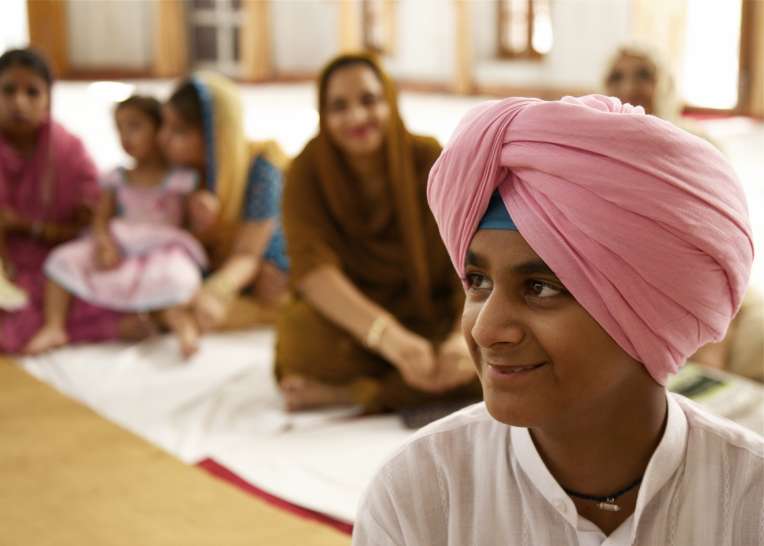
Welcome to our first Screening Room Presentation
Each month we will screen online ethnographic films and other documentaries relevant to anthropological concerns, inquiries and conversations. Each Screening Room presentation will be accompanied by a conversation/interview with the filmmakers, commentary by a scholar in a related field, or a study guide for classroom use and/or screenings. Our first feature is "Roots of Love," a short documentary that explores the changing significance of hair and turban use among Sikhs in India. Harjant Gill, an Assistant Professor in the Department of Sociology, Anthropology and Criminal Justice at Towson University directed the film. "Roots of Love" was produced in dialogue with Harjant Gill’s doctoral dissertation, which explores the formation of contemporary Punjab Sikh masculinity in Northern India. His research interests include gender, globalization, ethnographic film and popular culture in India and South Asian diaspora. "Roots of Love" has been screened on BBC World News, PBS and Indian National TV.
Synopsis:
Told through the stories of six different men ranging in age from fourteen to eighty-six, Roots of Love documents the changing significance of hair and the turban among Sikhs in India. We see younger Sikh men abandoning their hair and turban to follow the current fashion trends, while the older generation struggles to retain the visible symbols of their religious identity. The film is a timely and relevant exploration of the inherent conflict between tradition and modernity, between pragmatism and faith. The choice of cutting one’s hair is one that not only concerns the individual and his family, but an entire community.

Study Guide Questions
-How does the film explore the meaning and importance of the turban in Sikh culture?
-What is the relationship between masculinity, hair and belief?
-Why did Pali cut his hair? How does this speak to generational gaps explored in the film in relation to social changes?
-What tensions and contradictions do Sikhs face regarding discourses of contemporary secular modernity? What impact has migration and terrorism had on turban wearing practices and ideas of masculinity within the Sikh community?
-What is the role of women in relation to ideas of masculinity and turban wearing? What is the difference in the roles of mothers and fathers in raising Sikh children?
-Why did the filmmaker decide to contrast the story of a young boy undergoing his turban tying ceremony with that of a Sikh in his late 20s cutting his hair?
-In what ways do some of the characters explain the turban as being empowering?
Resources
Current News/Blogs
Reddit Users Attempt to Shame Sikh Woman, Get Righteously Schooled
The Sikh Woman Who Won't Remove her Facial Hair for Religious Reasons
Turbans Do Not Equal Terrorism: Sikhs Promoting Awareness in a Post-9/11 America
Malaysian Sikhs Angry After Sikh Politician Shaves His Head Bald at Chinese Temple
Books
When a Tree Shook Delhi: The 1984 Carnage and its Aftermath by Manoj Mitta and H.S. Phoolka
The Guru's Gift: An Ethnography Exploring Gender Equality with North American Sikh Women by Cynthia Mahmood and Stacy Brady
Fighting for Faith and Nation: Dialogues with Sikh Militants by Cynthia Keppley Mahmood
Films and Documentaries
Post-9/11 Sikh life in US (fictional film)
Masculinity in the US
References
Axel, Brian Keith. 2004. The Context of Diaspora. Cultural Anthropology 19(1): 26-60.
Cool, Jennifer. 2012. Roots of Love by Harjant Gill, dir.. American Anthropologist 114(4): 687-688.
Dusenbery, Verne A. 1997. The Poetics and Politics of Recognition: Diasporan Sikhs in Pluralist Polities. American Ethnologist 24(4): 738-762.
Gill, Harjant. 2012. Masculinity, Mobility and Transformation in Pubjabi Cinema: From Putt Jattan De (Sons of Jat Farmers) to Munde UK De (Boys of UK). South Asian Popular Culture 10(2).
Keppley Mahmood, Cynthia. 1994. Violence and the Culture of Sikh Separatism. PoLAR: Political and Legal Anthropology Review 17(1): 11-22.